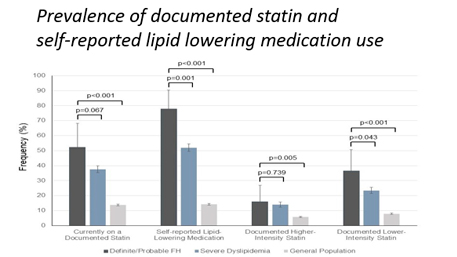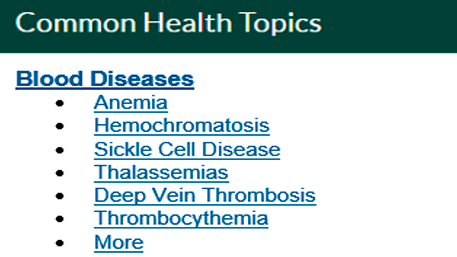Search Results
10 results for population screening
When Should You Be Screened for Colorectal Cancer?

Starting at the right time saves lives. People with a family history of CRC may need to start much earlier. Doctors and public health professionals strive to live by the creed “First, do no harm” but often wrestle with difficult choices, including when and how often screening tests should be conducted. Effective prevention of colorectal
Posted on byStimulating Implementation Science in Genomics and Precision Medicine for Heart, Lung, Blood and Sleep Diseases: The Case of Familial Hypercholesterolemia

Implementation science is an emerging field of scientific inquiry that has been increasingly applied to genomics and precision medicine. In our recent papers on the state of scientific publications and NIH funding, we have identified areas of growth and limitations of the field and called for more training and workforce development for implementation science in
Posted on byFamilial Hypercholesterolemia is Common and Undertreated in the United States

Familial hypercholesterolemia (FH) is an autosomal dominant genetic disorder that significantly increases the risk of atherosclerotic cardiovascular disease and premature deaths from heart attacks and stroke. The national prevalence of FH and rates of screening, awareness, and treatment with statins among individuals with FH and other causes of high lipid levels (dyslipidemias) remain largely unknown.
Posted on byLeap of Faith or Smart Investment? Early Integration of Whole Genome Sequencing in Healthcare Systems

Discovery science in genomic medicine has generally enjoyed longstanding large collaborations for data sharing and joint analyses. Synergies among collaborators has accelerated major advances in our understanding of the genetic basis of health and diseases. More recently, some of the same scientists have come together to aggregate data for more applied clinical research with NIH
Posted on byHLBS-PopOmics: NHLBI and CDC partner to launch a public health genomics knowledge base for heart, lung, blood, and sleep disorders

Timely and targeted dissemination of published research findings is an important step in accelerating the pace of turning discovery into health. To achieve this goal in human population genomics, the NHLBI has partnered with the CDC Office of Public Health Genomics (OPHG) to launch a heart, lung, blood, and sleep disorders knowledge base in population
Posted on bySaving a Million Hearts: One Heart at a Time!

Cardiovascular disease (CVD), principally ischemic heart disease and stroke, remains the leading cause of U.S. deaths for men and women and all races and ethnicities in spite of major progress in its prevention and treatment. CVD is also the greatest contributor to racial disparities in life expectancy. In 2012, 120 public and private partners and
Posted on byTrends in CDC Publications in Public Health Genomics, 2012-2016

Public health genomics advances the translation of genome-based discoveries into disease prevention and population health. Scientists at the Centers for Disease Control and Prevention (CDC) are using information about human, vector, and pathogen genomes to tackle diverse public health problems, from newborn metabolic disorders to infectious disease outbreaks. For an overview of CDC publications in
Posted on byHappy Holidays! Celebrating the Arrival of 2018 and 20 Years of Public Health Genomics!

This December, we are especially excited as we anticipate the dawning of a bright new year. The ebbing of 2017 marks the end of, not just another year, but two decades of public health genomics. Recently we were provided two valuable opportunities to place a capstone on this important milestone. Last month, at the American
Posted on byHappy Thanksgiving 2017: Take time to collect, share, and act on your family health history, it may save your life!

Regular readers of this blog may have noticed that we have an almost identical message around each Thanksgiving Day. Collect, share, and act on your family health history! It seems every year we emphasize a slightly different version of this message. In 2016, we highlighted the emergence of new tools that can help consumers and
Posted on byTrends and Factors Affecting Utilization of BRCA Testing in the United States: The Need for Improved Surveillance

This blog post is a summary of two recent CDC papers on the trends in utilization of BRCA testing in the United States, and metropolitan-nonmetropolitan areas differences in testing. Women with pathogenic BRCA mutations have an estimated 45–65% risk of breast cancer and a 17–39% risk of ovarian cancer by age 70, as compared with
Posted on by